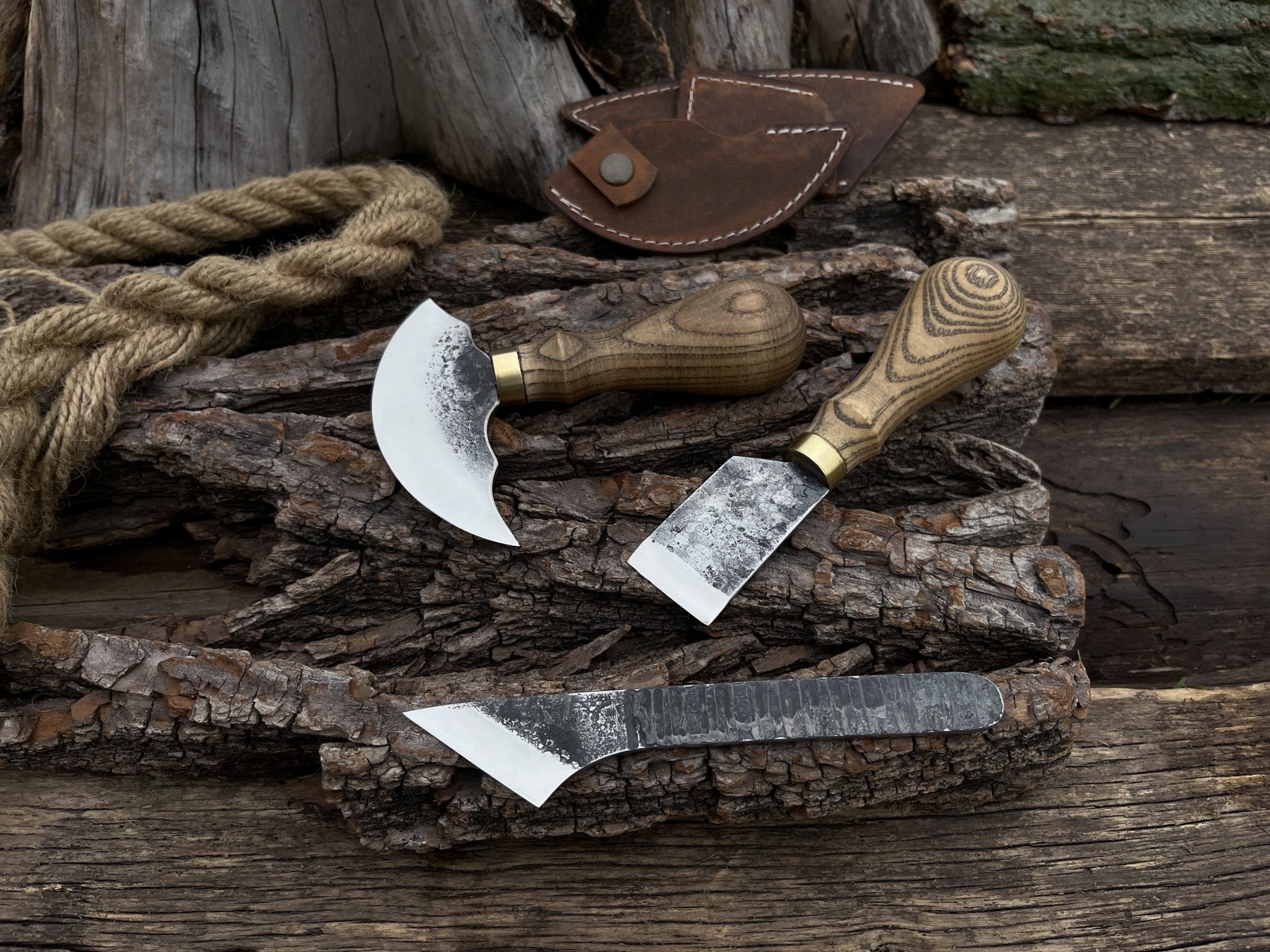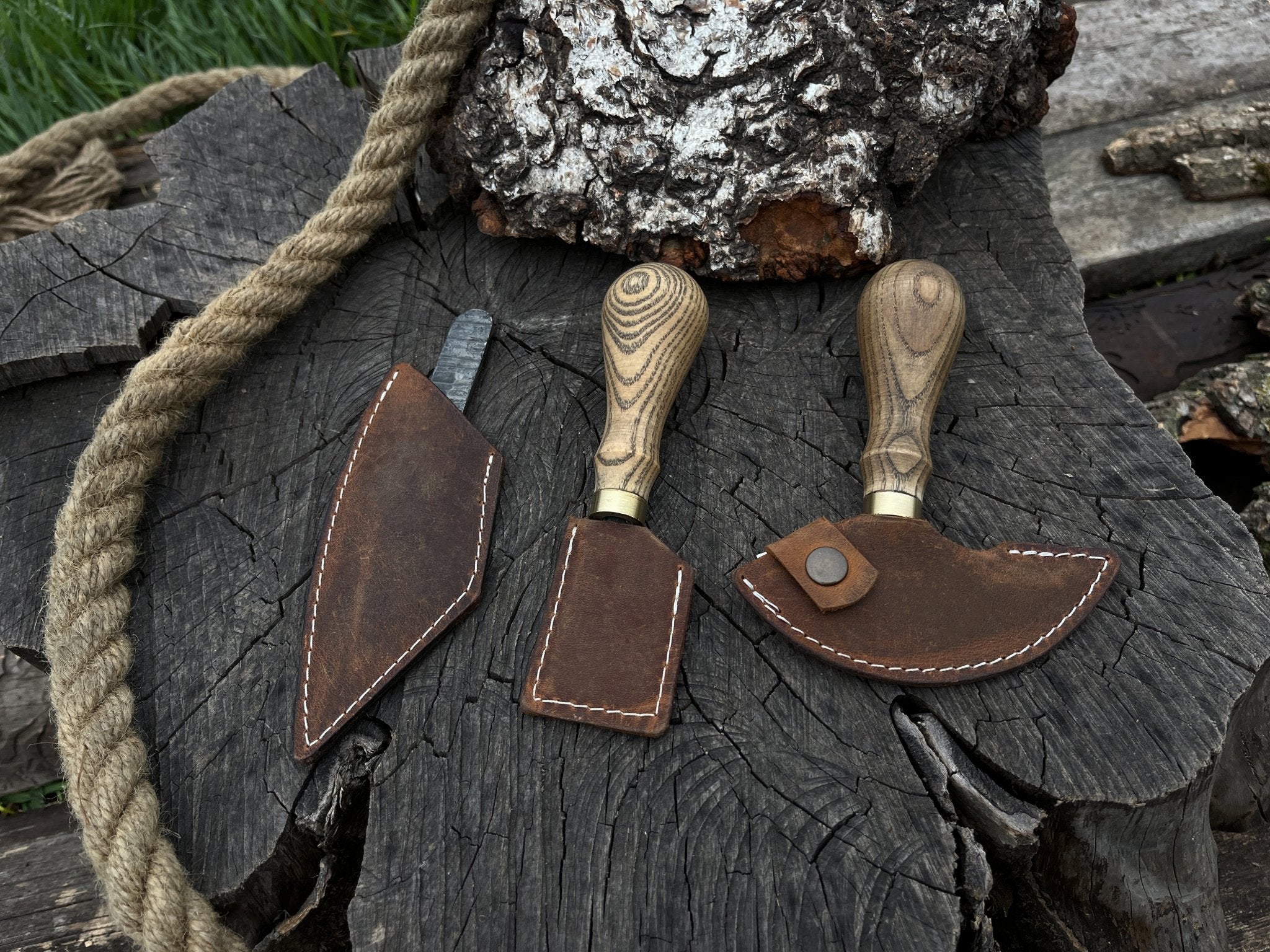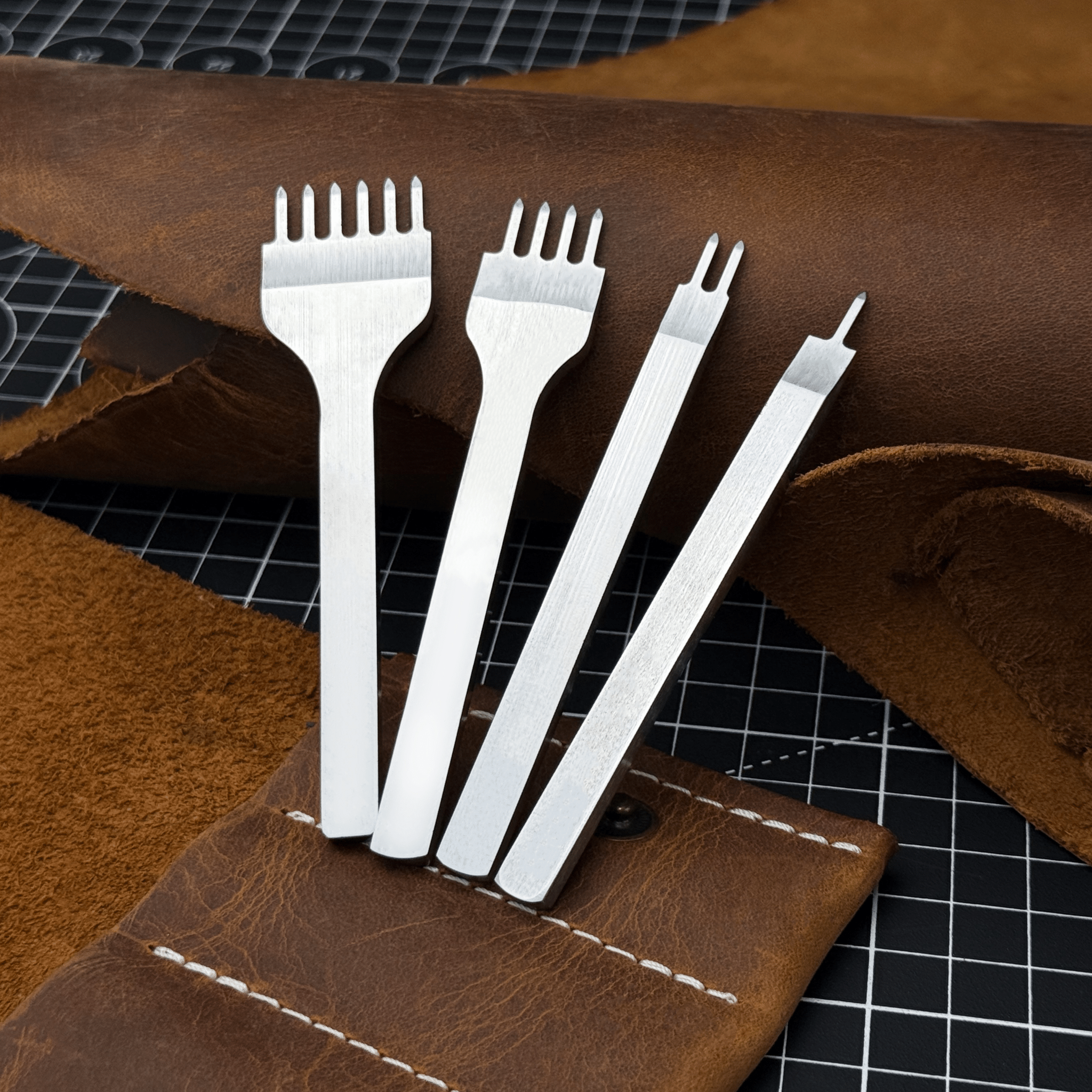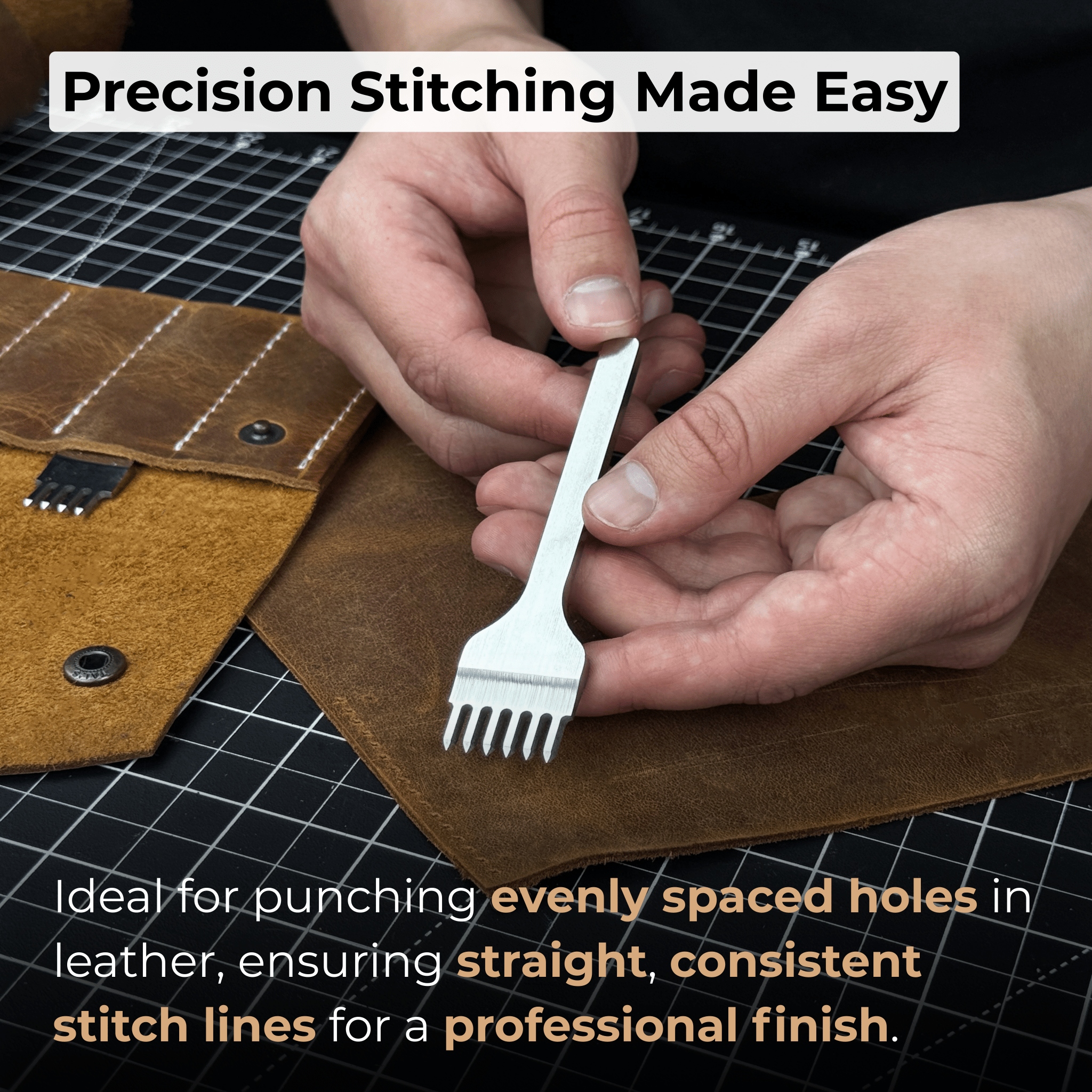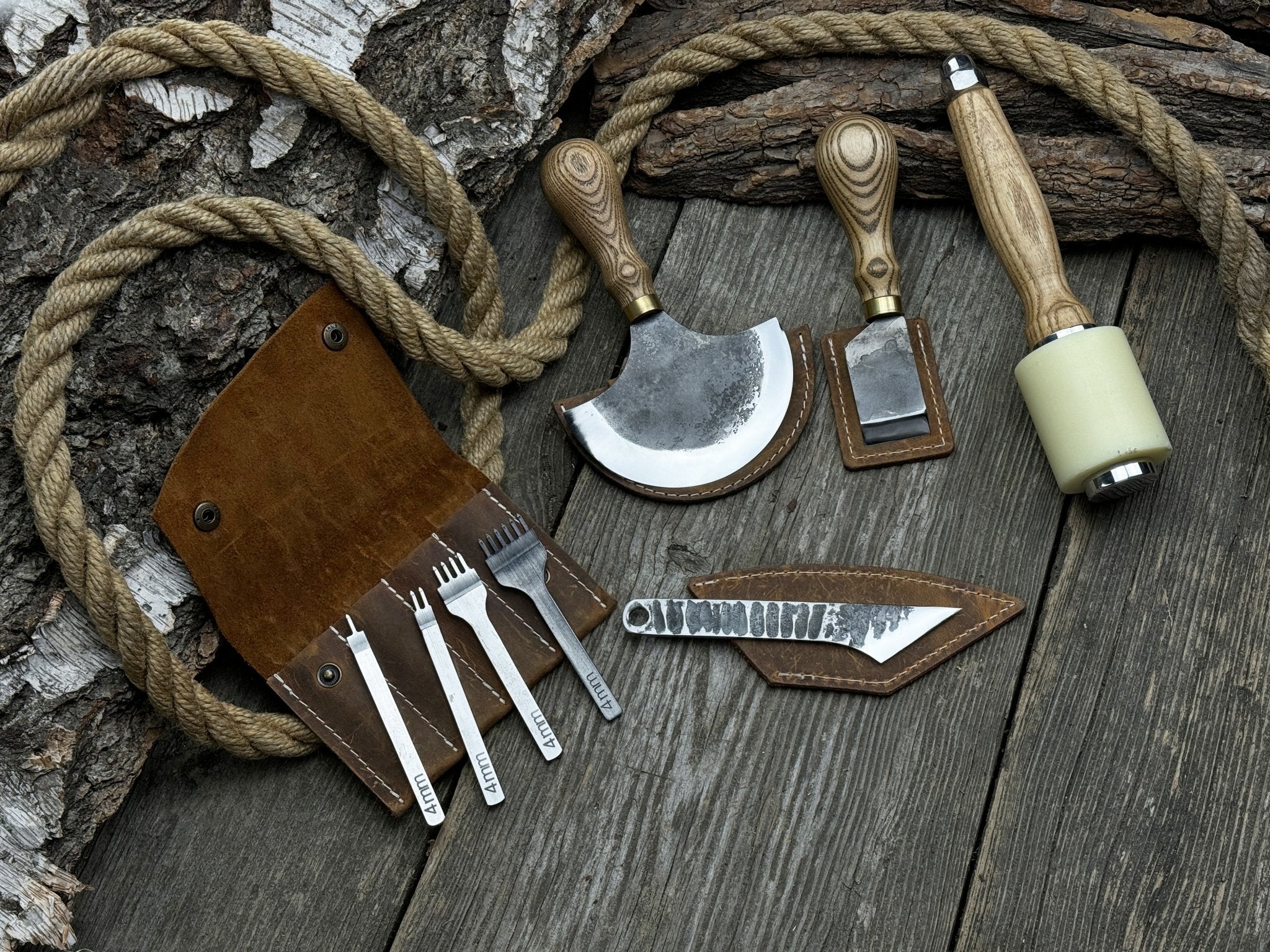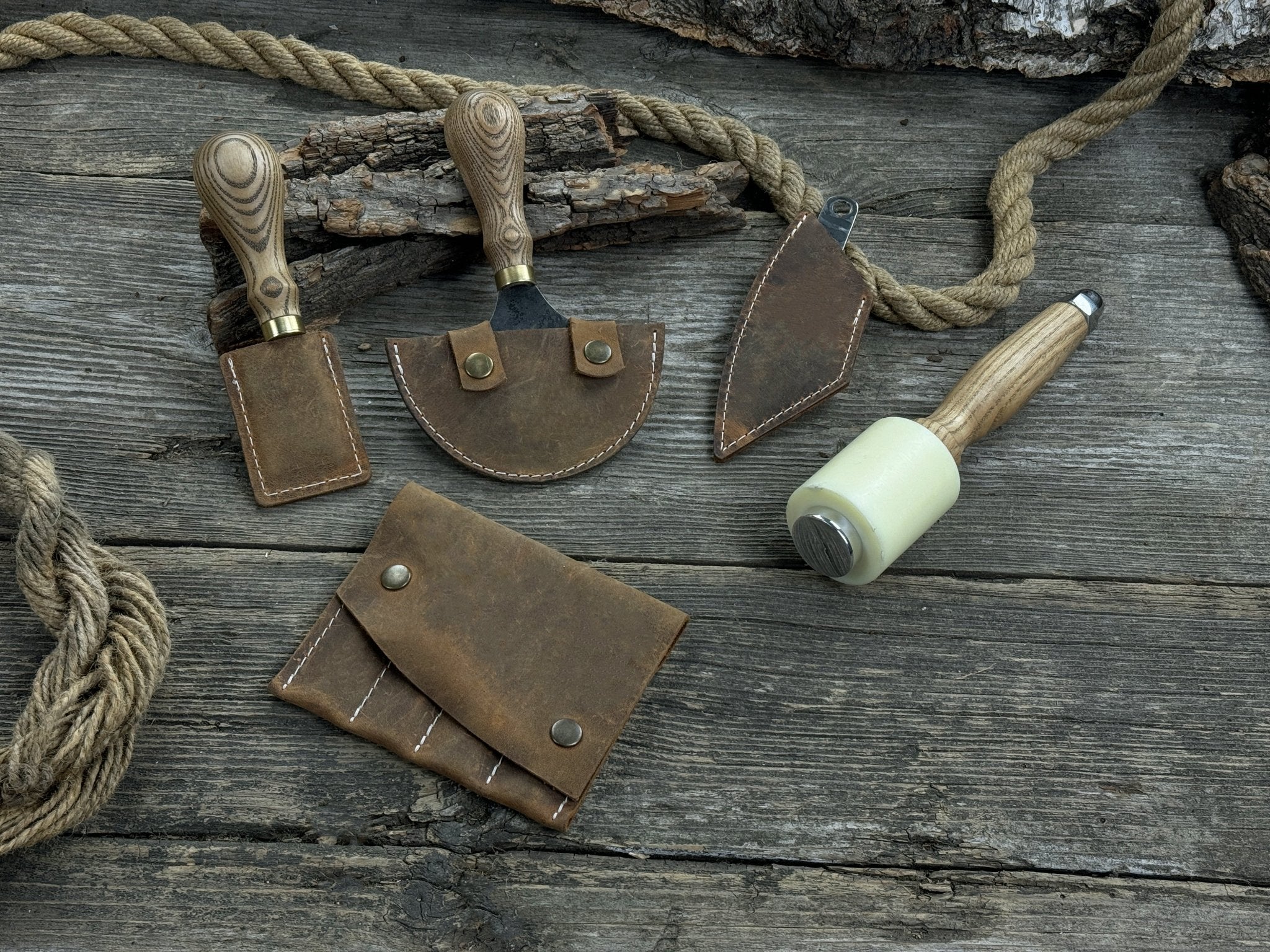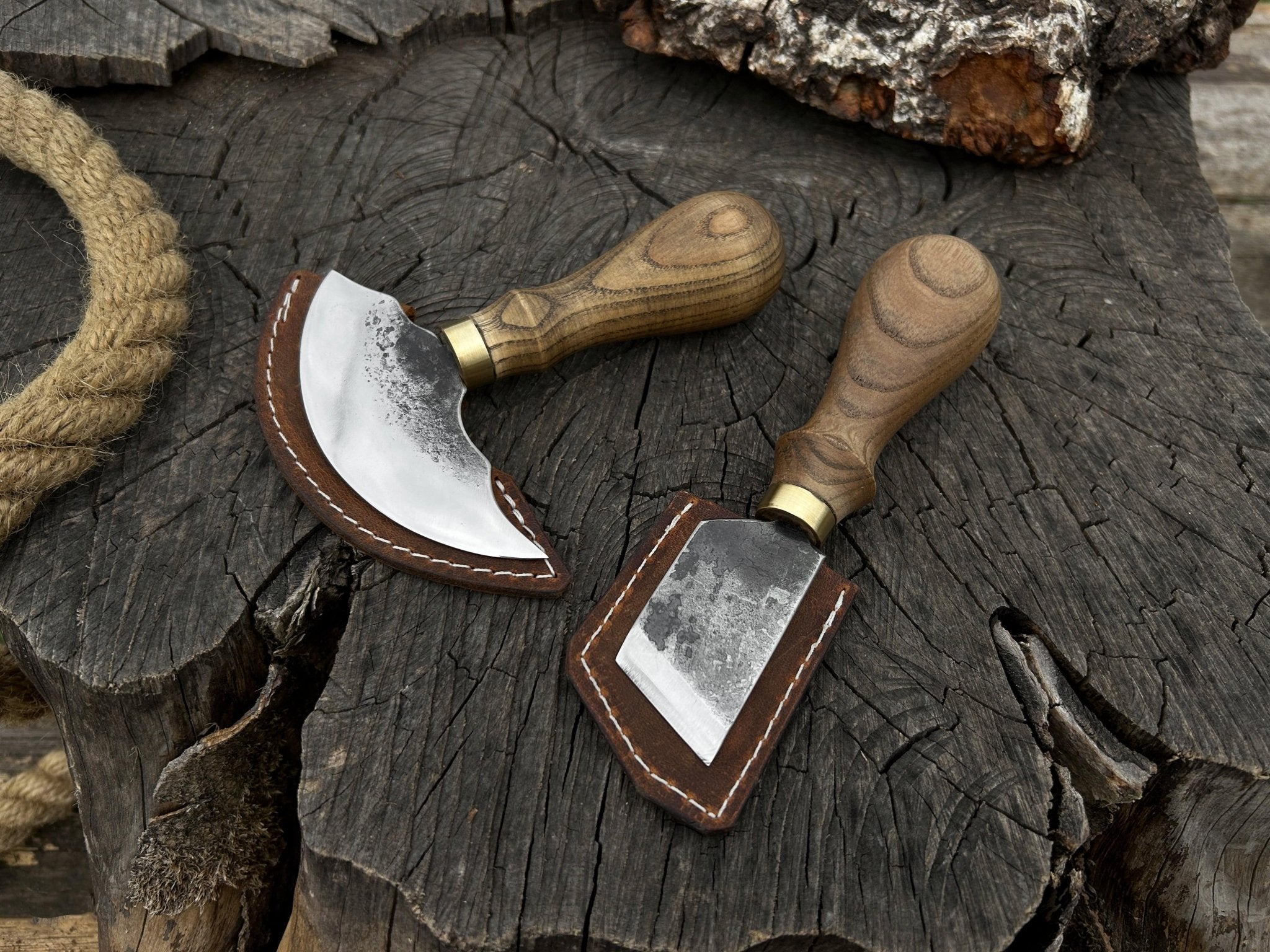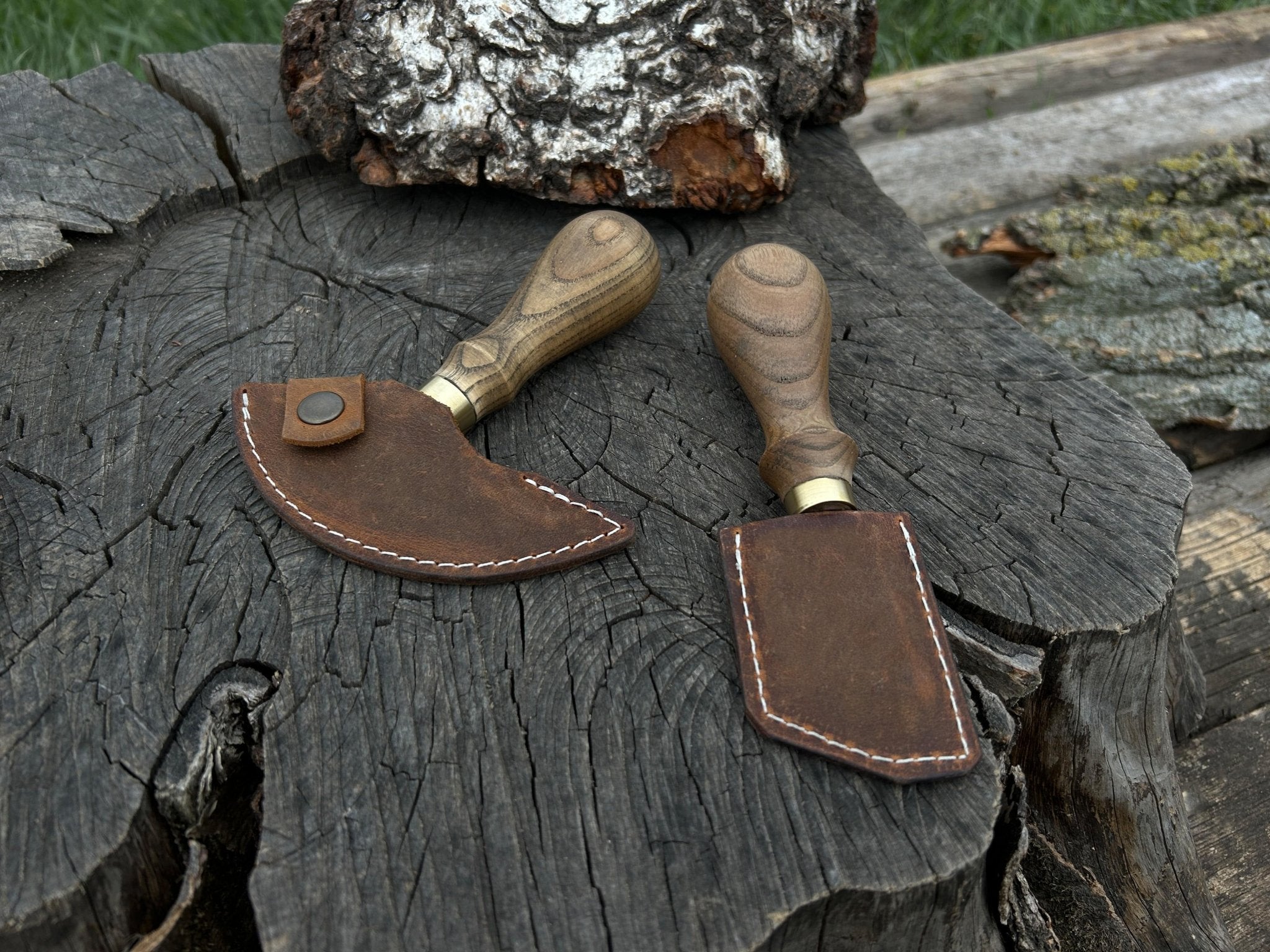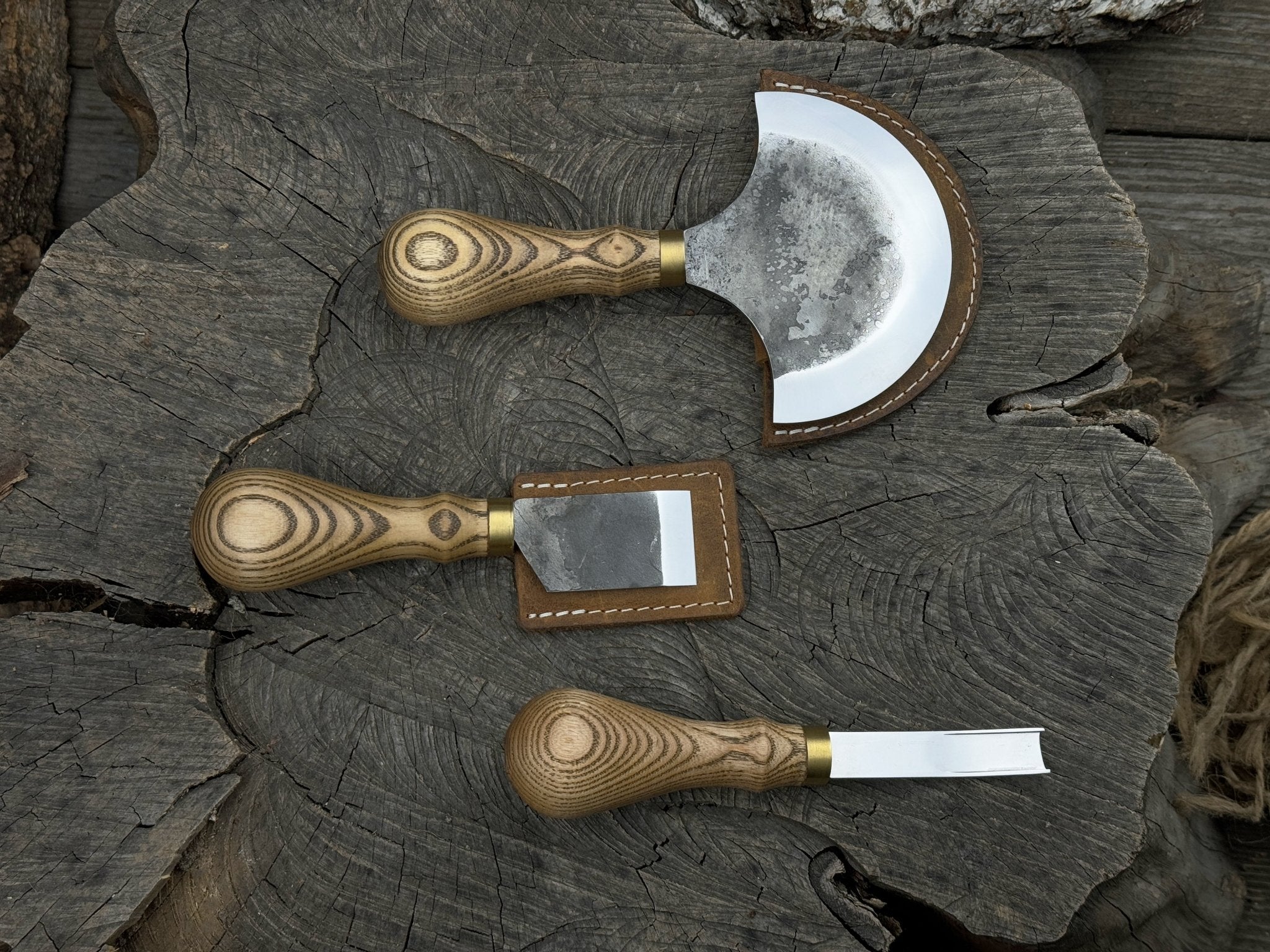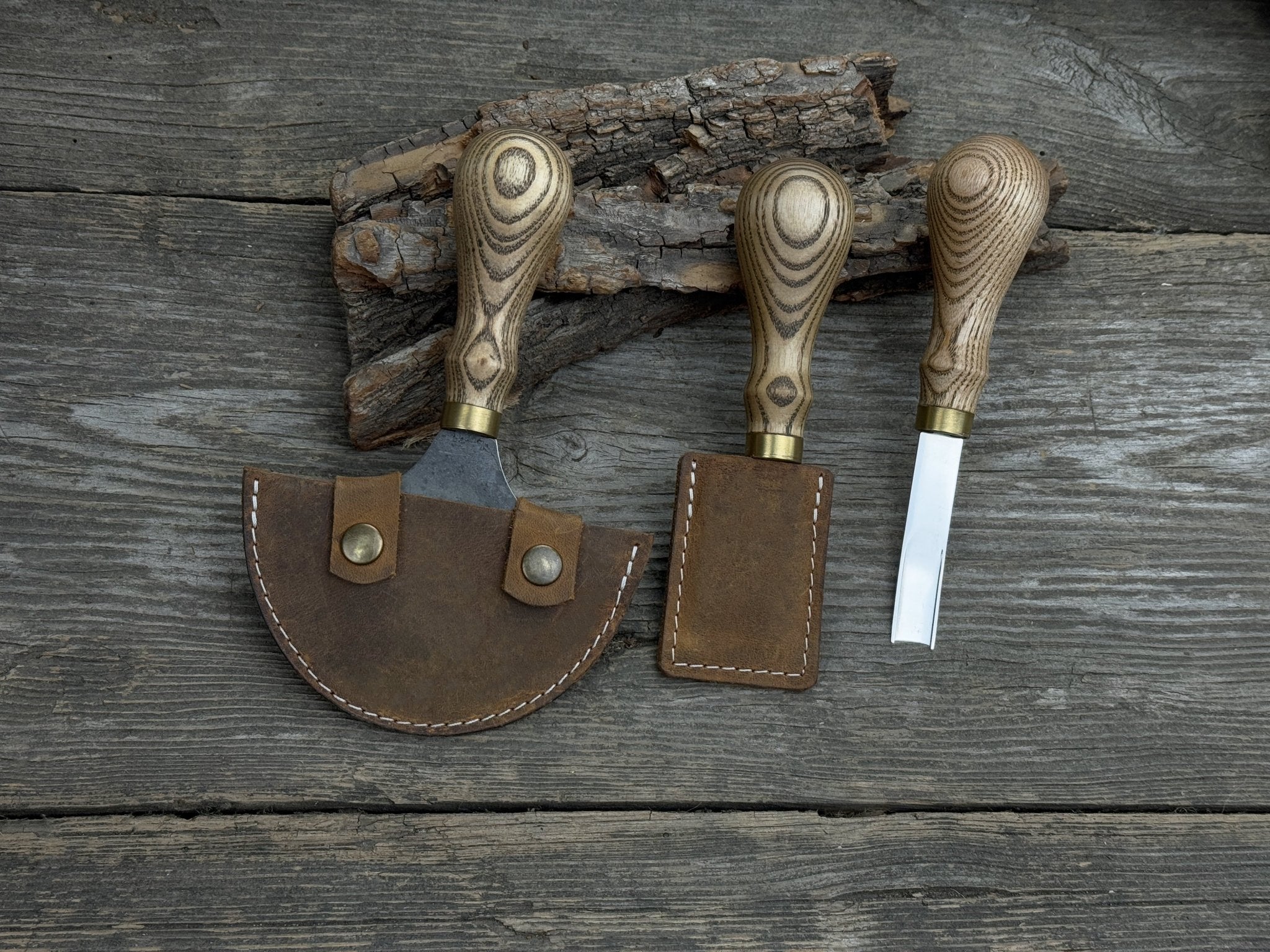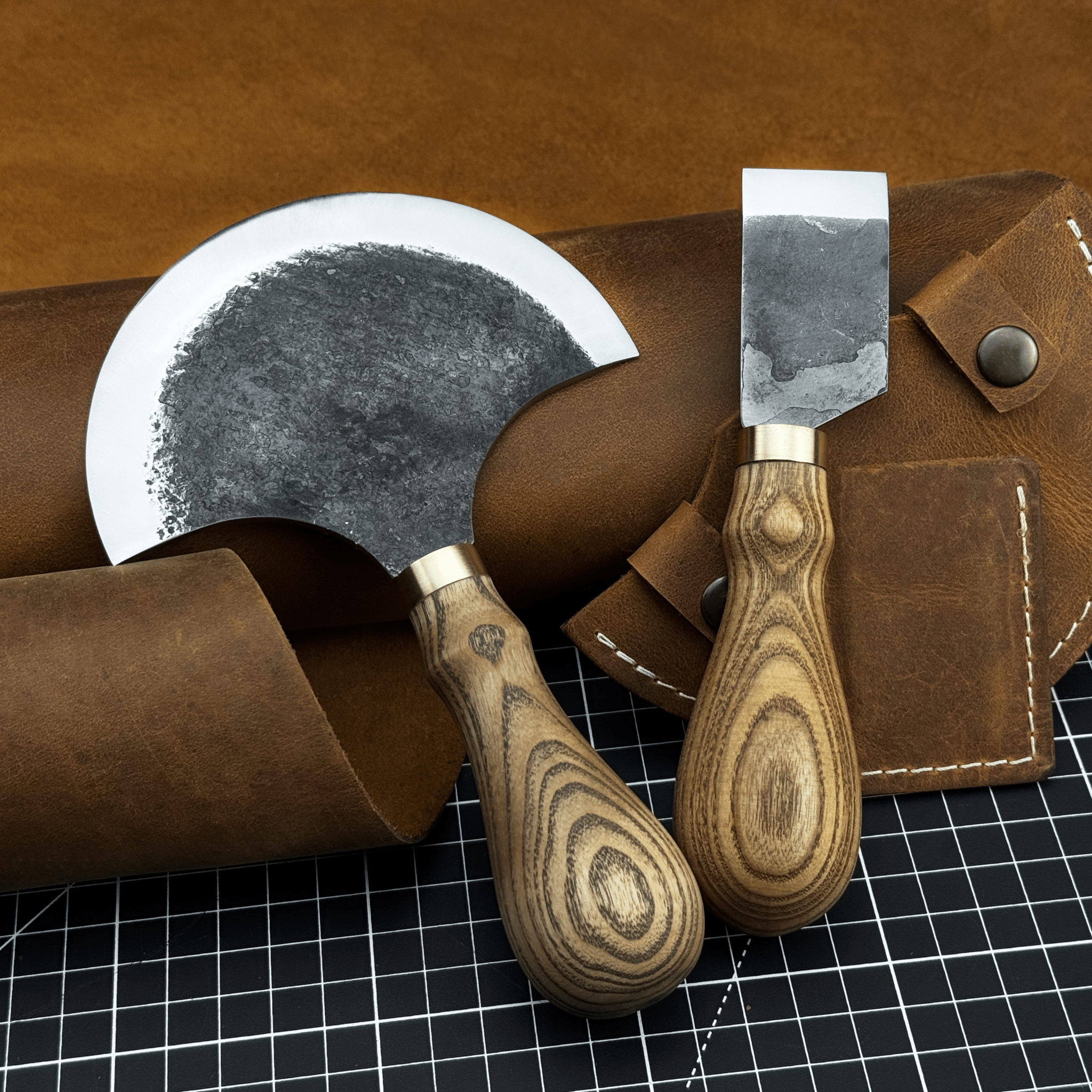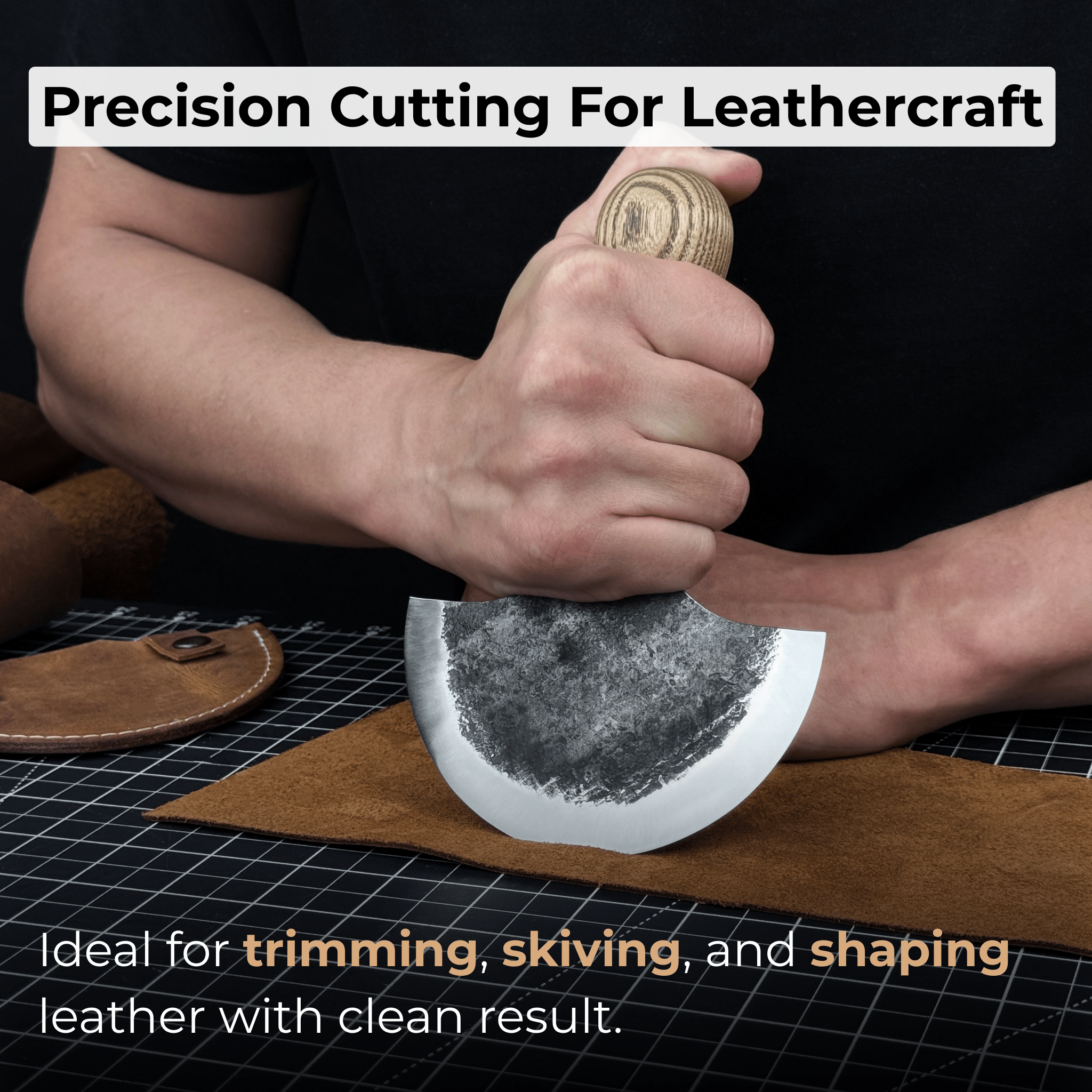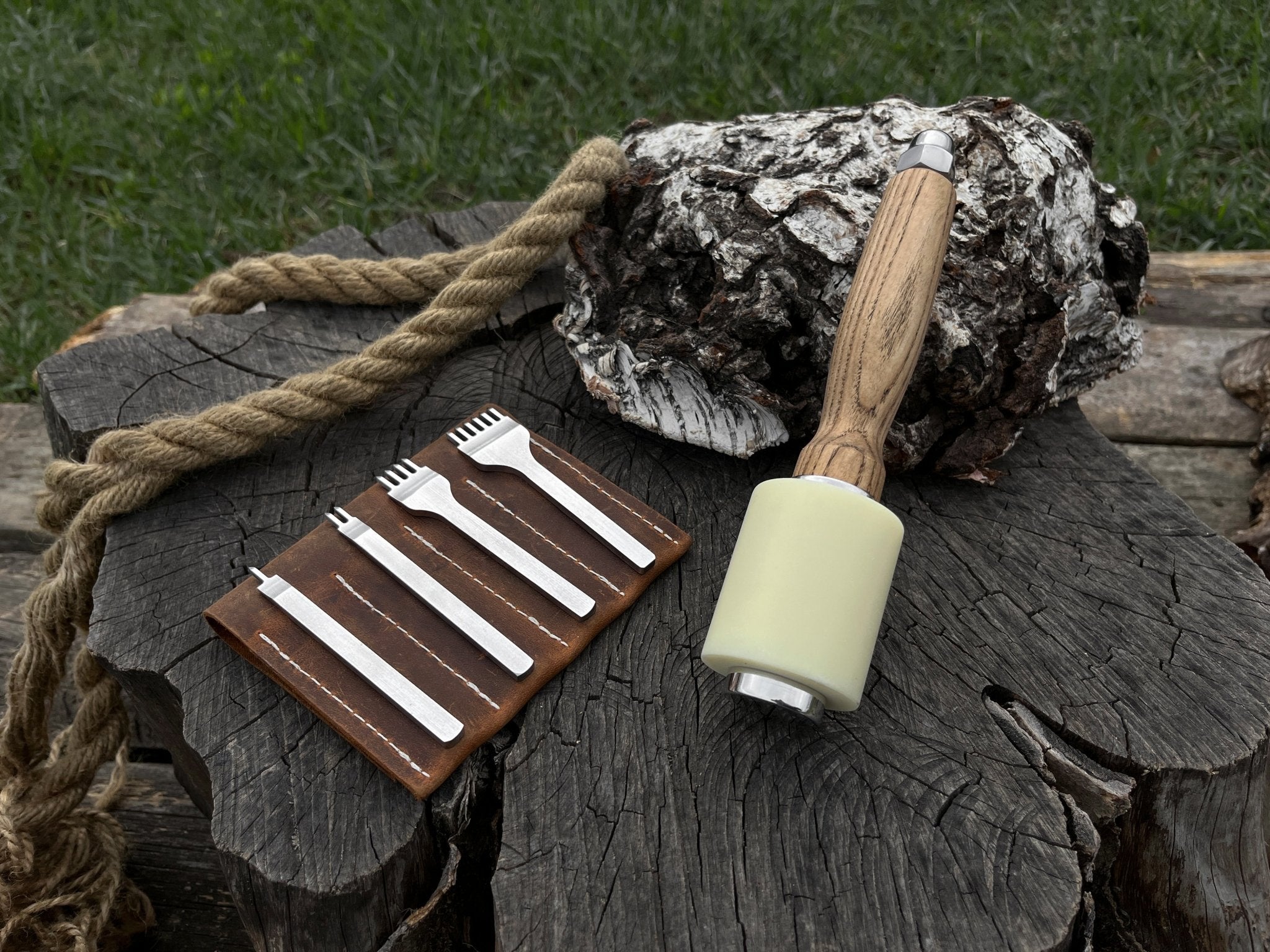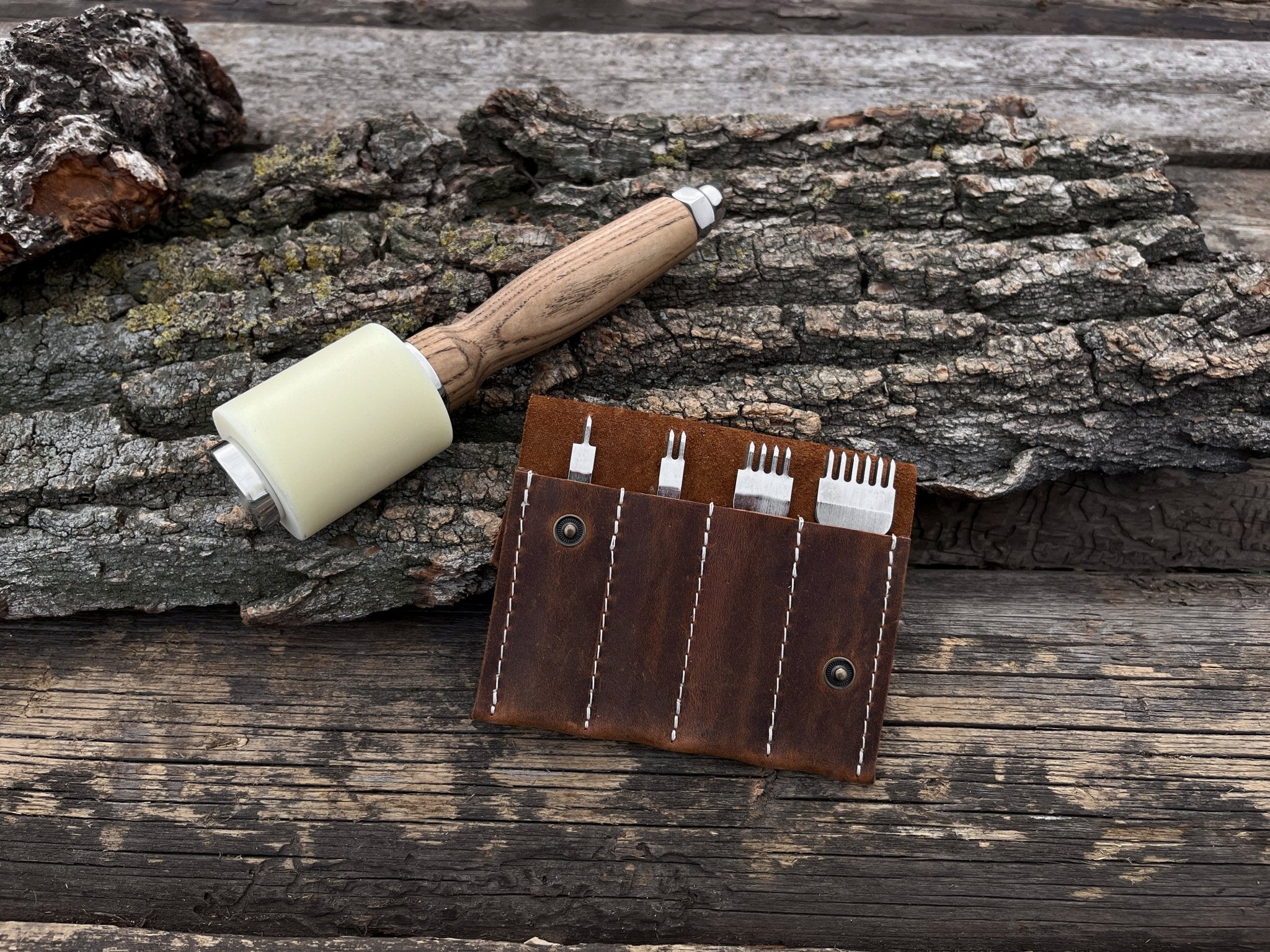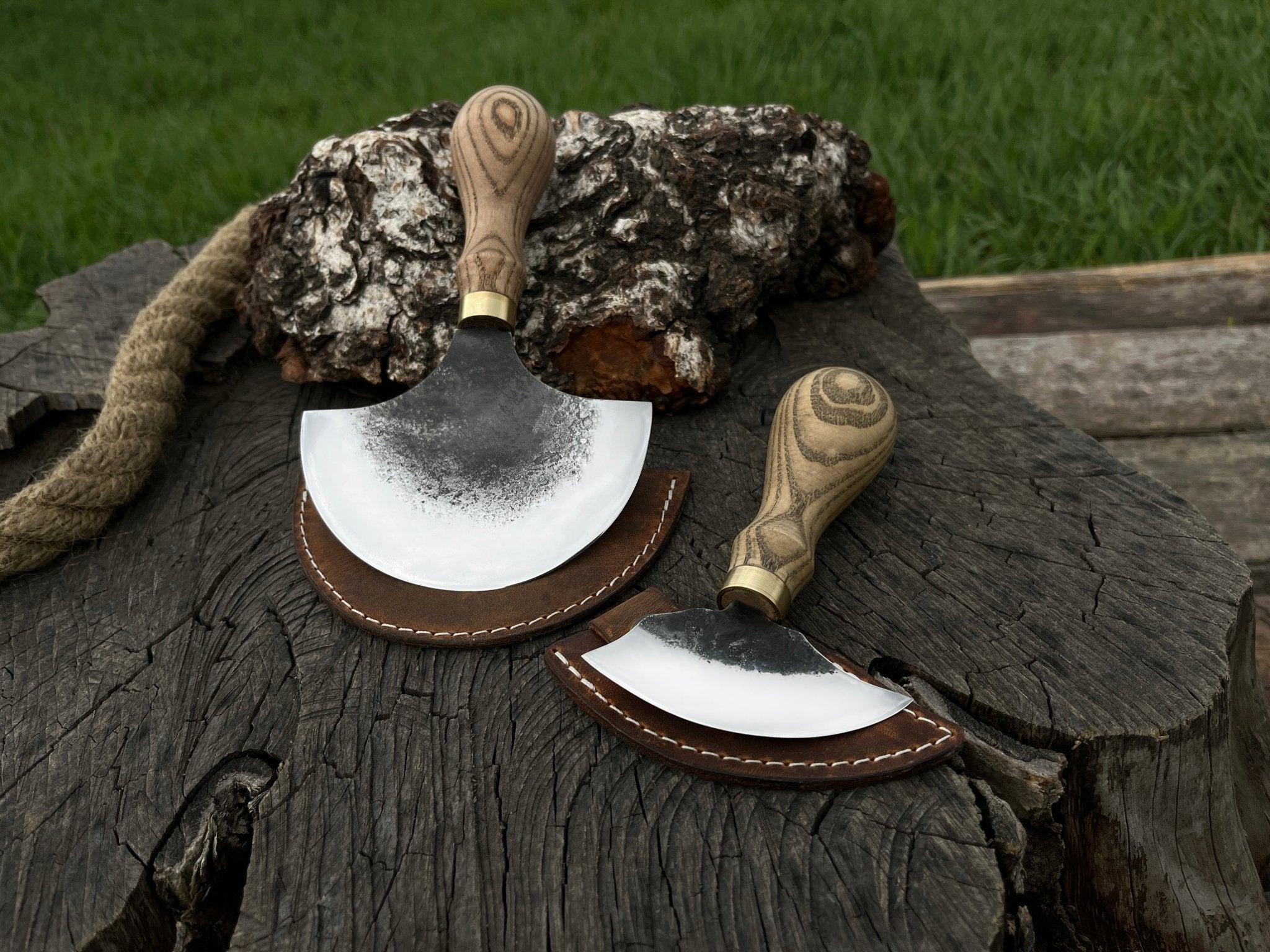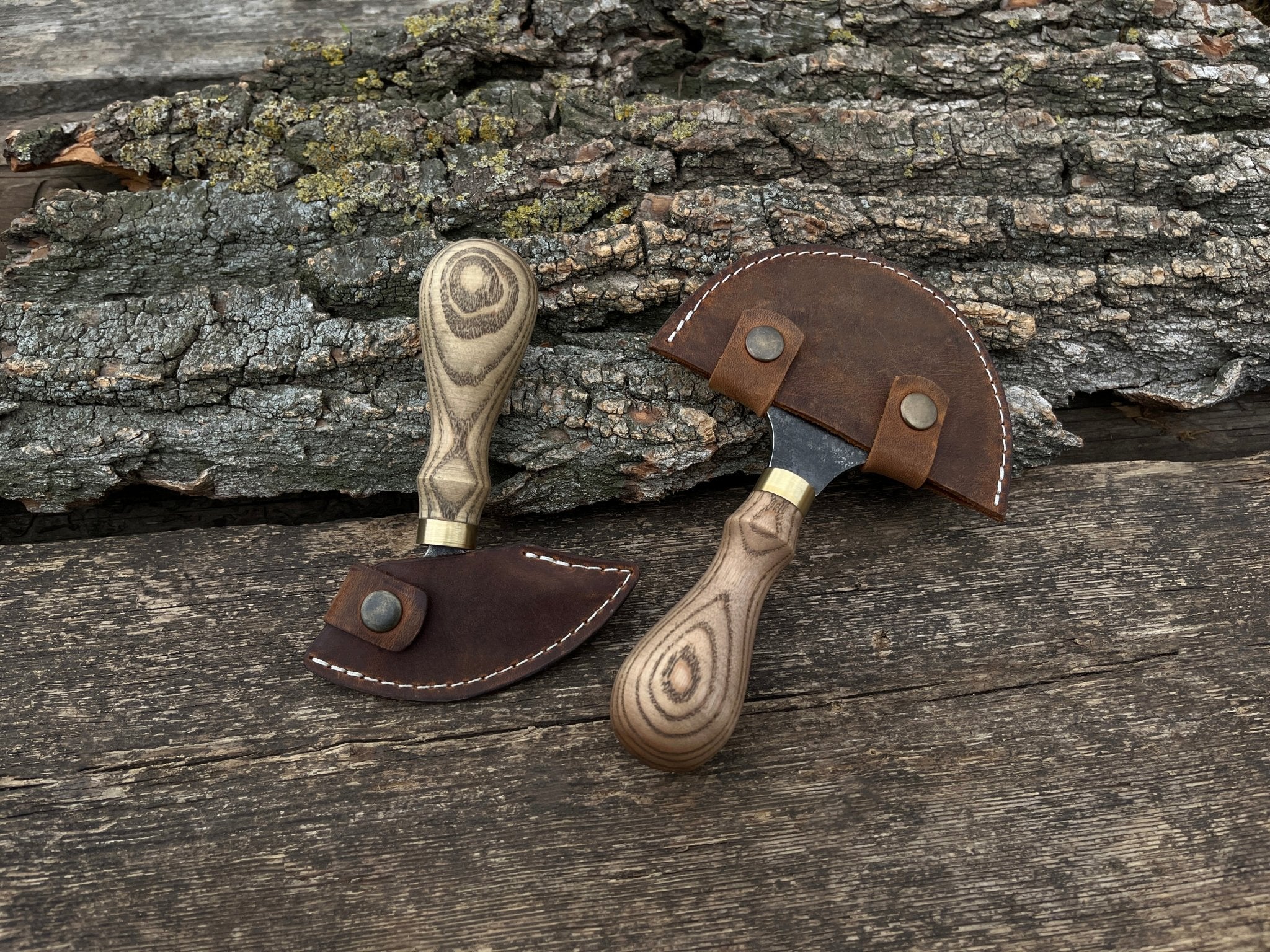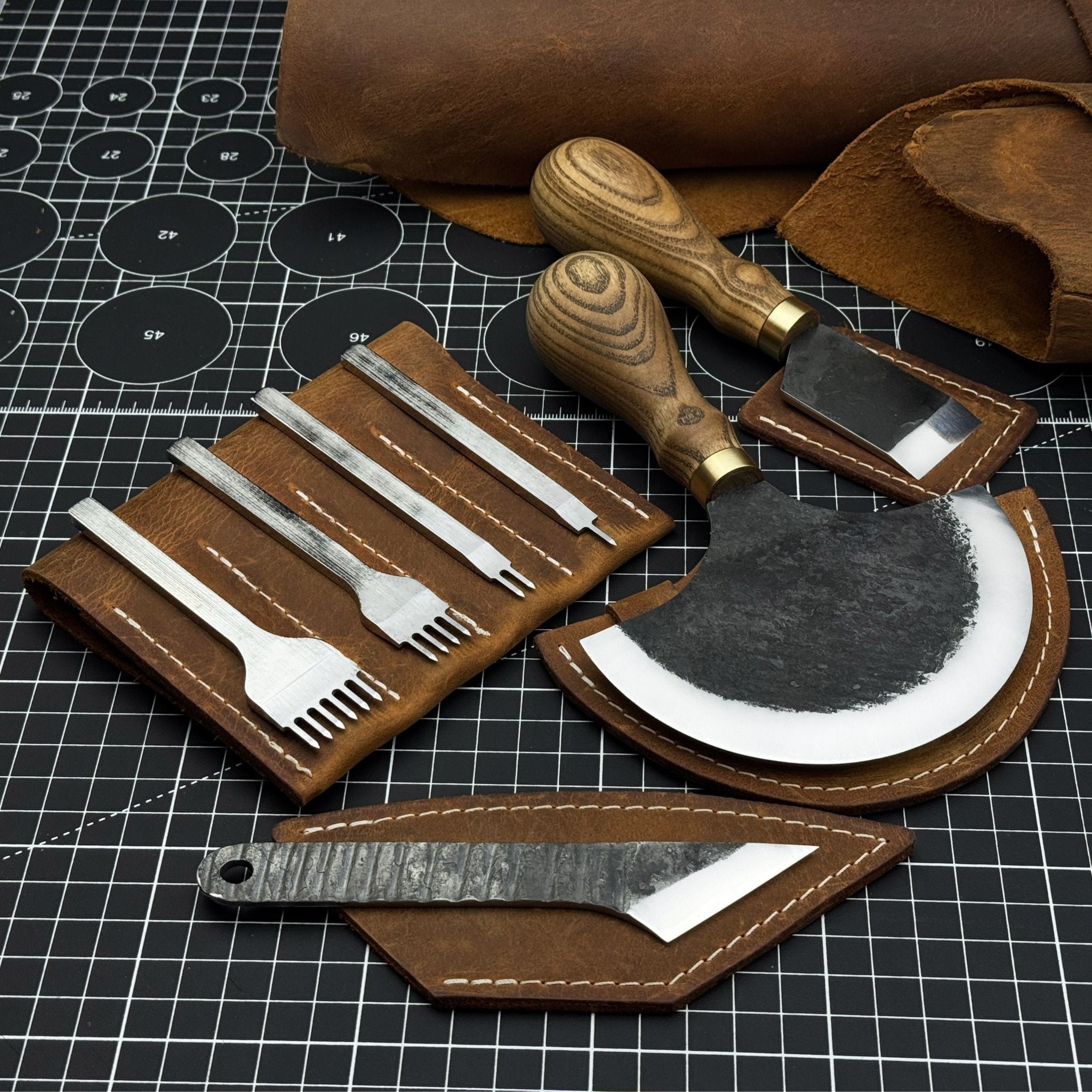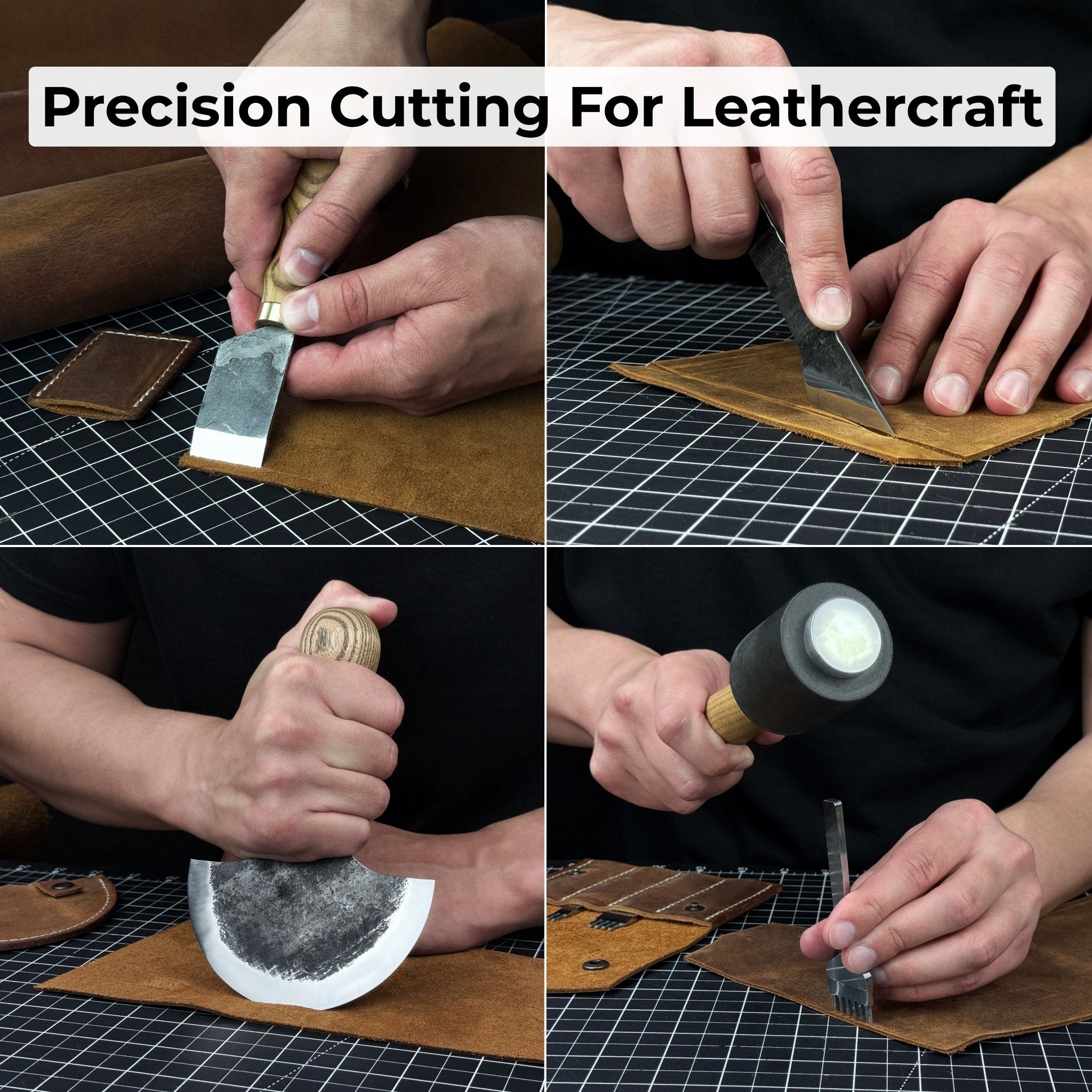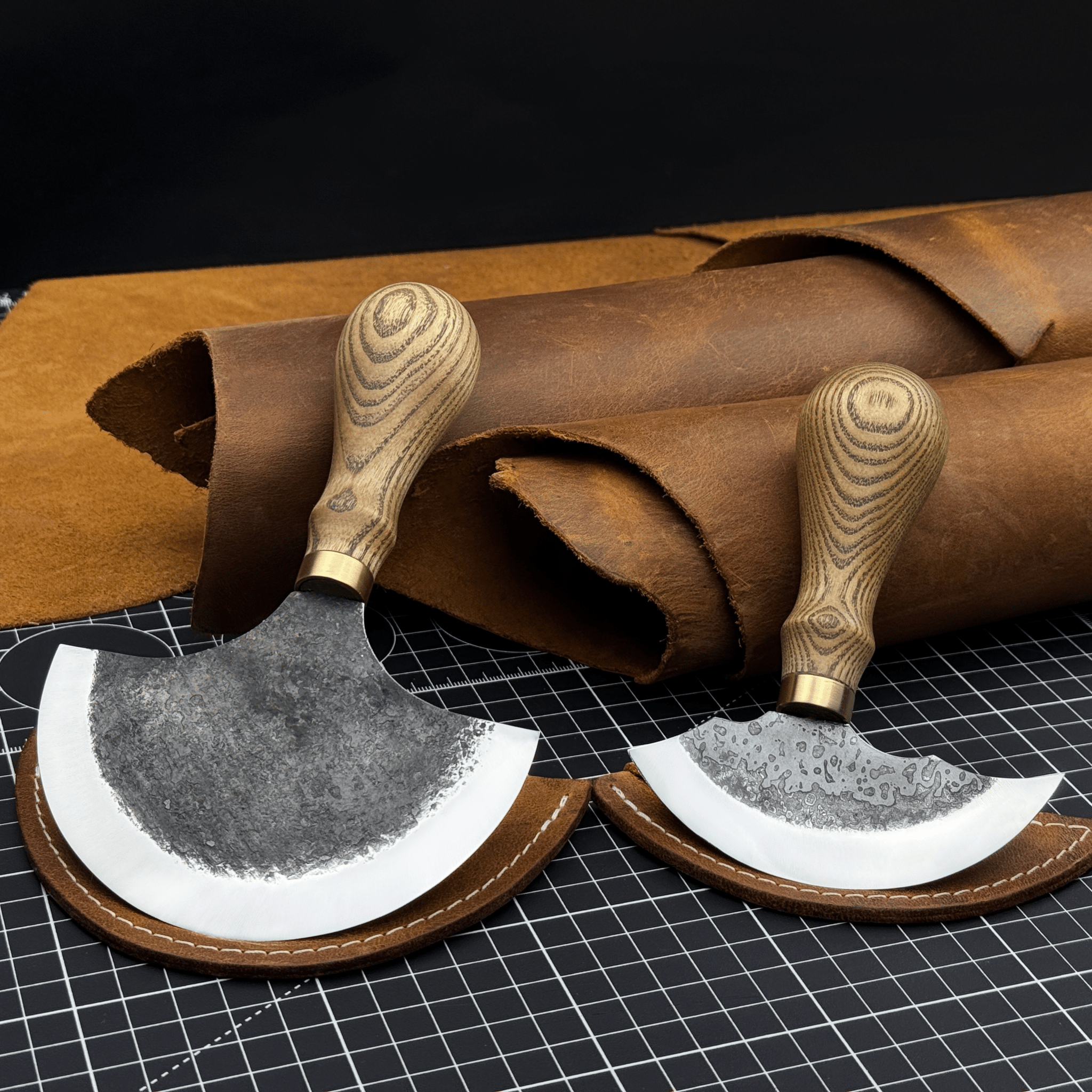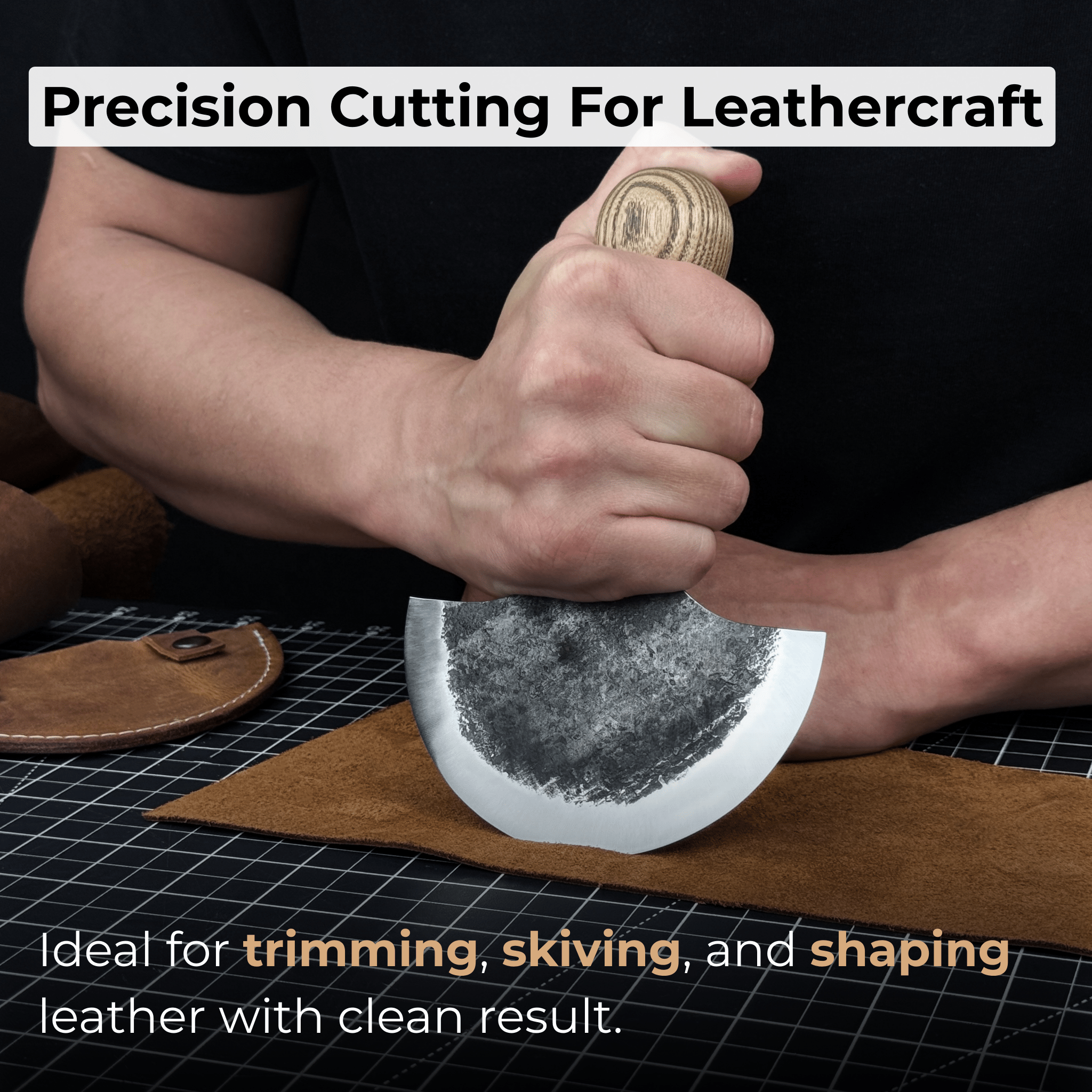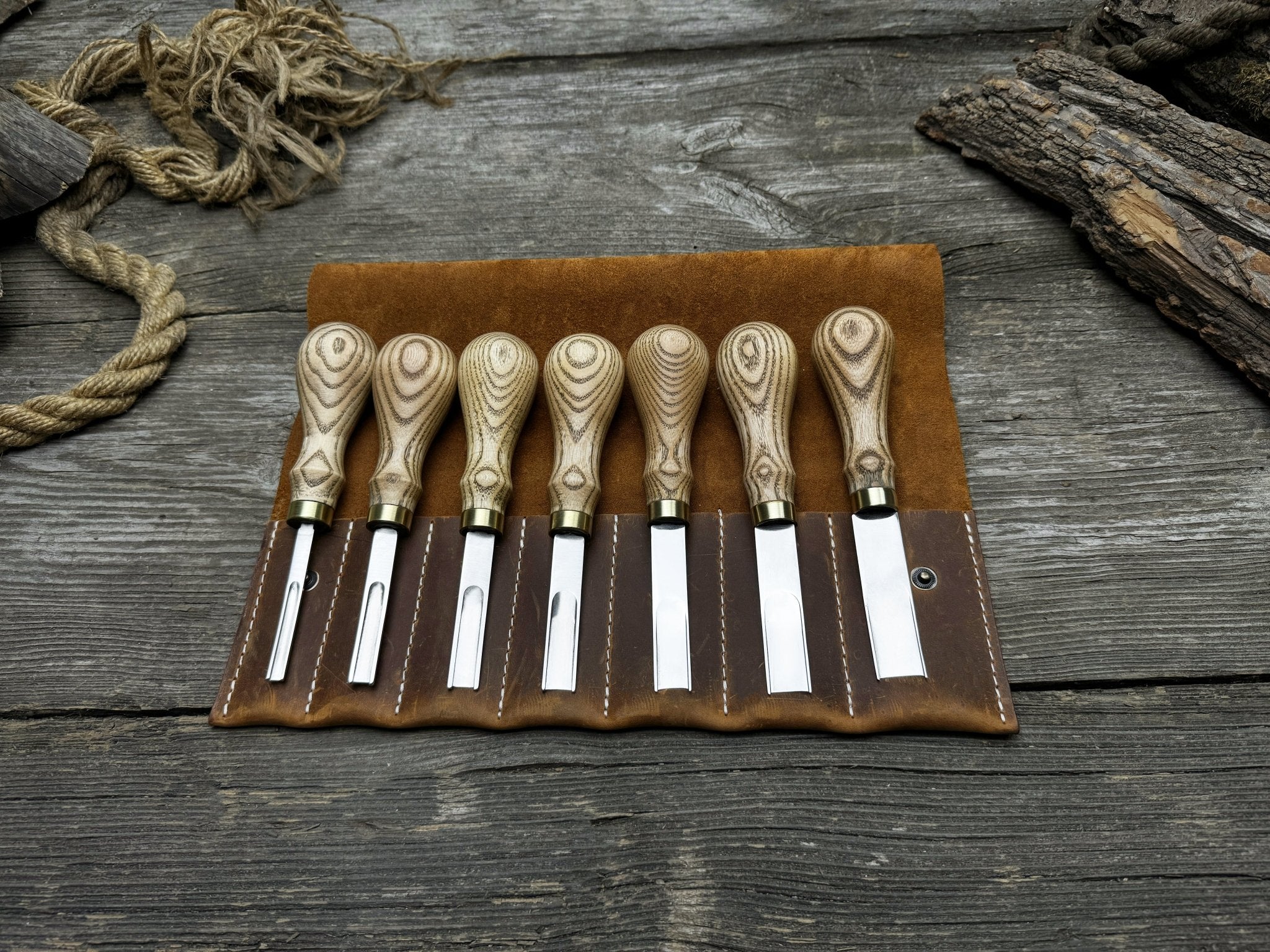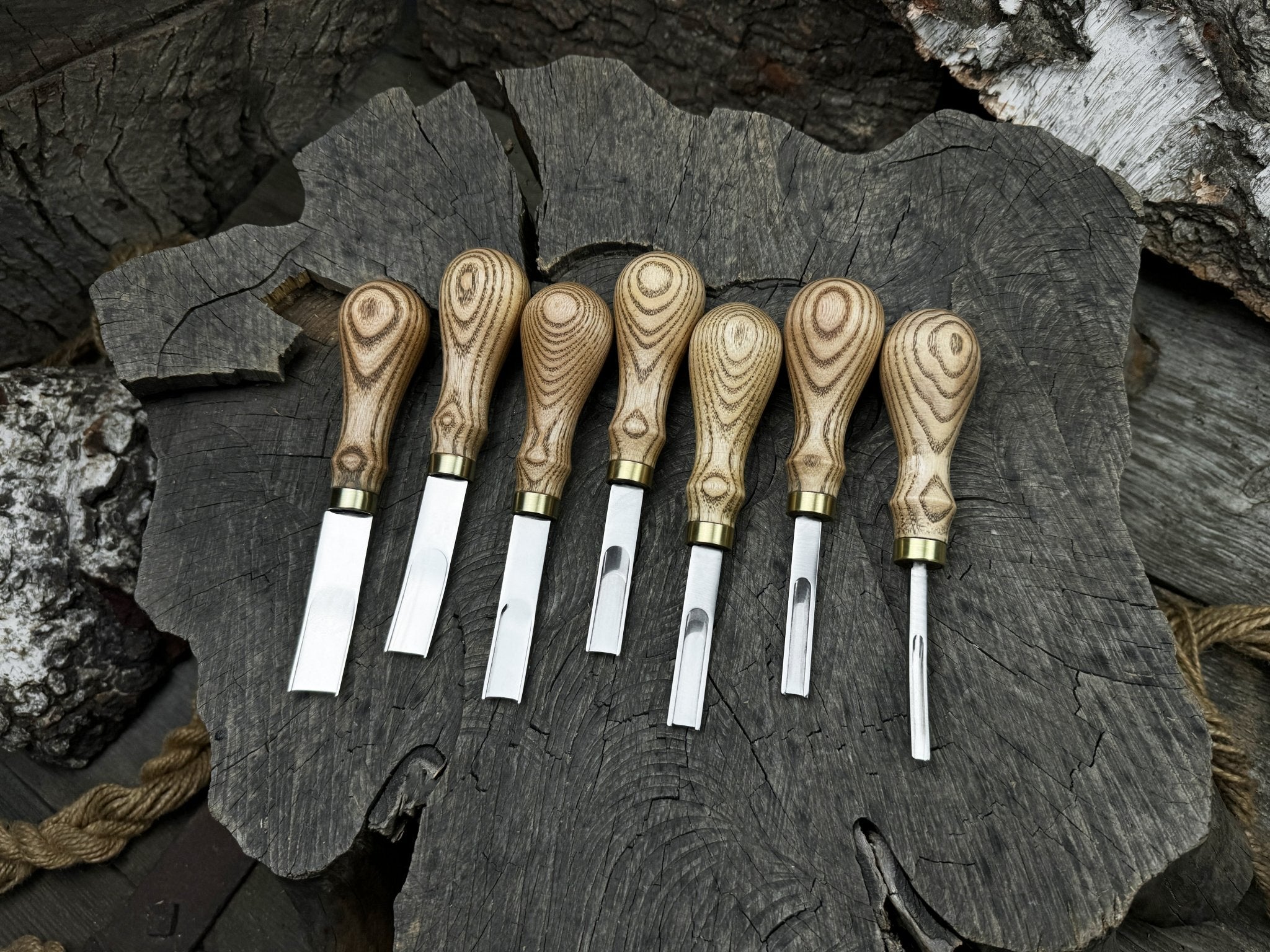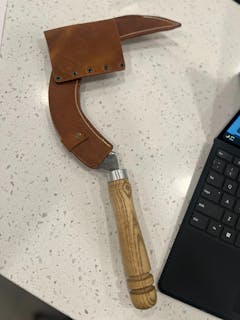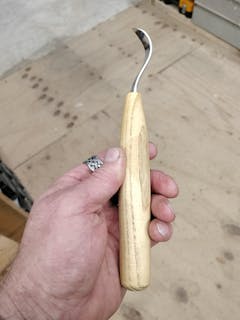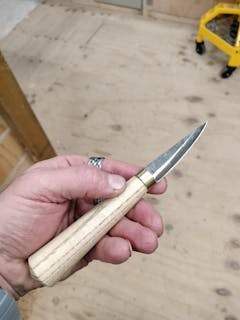2-Piece Rounded and Straight Leather Knife Set
3-Piece Leatherworking Tool Set
4-Piece Diamond Style Leather Pricking Iron Set, 1, 2, 4, 6 Prongs
5-Piece Leather Working Tool Set With Nylon Mallet
2-Piece Rounded and Angled Leather Knife Set
3-Piece Leather Working Kit with Leather Sheaths
2-Piece Straight and Round (Half Moon) Leather Knife Set

4-Piece Diamond Style Leather Pricking Iron and Leather Nylon Hammer
2-Piece Rounded Leather Knife Set
4-Piece Leatherworking Tool Set with Leather Sheaths
2-Piece Round Knife Set for Leathercraft
7-Piece Leather Edge Skiver Set
Selecting the Perfect Leather Working Tool Kit for Your Needs
Understanding the Essential Tools in a Leather Working Kit
To get started in leatherworking, you need a basic leather working tool kit. It is less overwhelming and allows mastering fundamental techniques. As you progress, you will want to try different types of crafts, likely more complex, with more intricate designs, and this is when you may consider investing in specialty leather kits. This simple yet efficient approach will save you from breaking the bank by avoiding the purchase of fancy tools you may not even need.
Here are the key essentials to get you going:
- Awls (Scratch and Diamond): A scratch awl marks patterns on leather to guide cuts. A diamond awl pierces leather for stitching. These two tools are foundational for hand stitching.
- Cutting Tools: Start with a utility knife for cutting leather. For more precise cuts, you can use scalpel. With practice, you may want to upgrade to a head knife or round knife.
- Marking and Measuring Tools: Wing dividers help mark straight lines for stitching or buckle holes, doing an excellent measuring job. You may also want to use leather marking pencils to mark leather without scratches. A cutting mat helps make straight cuts and accurate measurements.
- Stitching Markers and Chisels: Chisels or stitch markers guide stitches. Chisels are great for beginners and can help make precise stitches. A simple fork can be used to mark stitches in a pinch.
- Punches: Use a rotary punch or a set of individual hole punches that cover most sizes to make holes for rivets, snaps, or stitching for your handmade project.
- Hammers: A nylon or rawhide hammer in your beginner leather work kit is absolutely necessary for striking tools without damaging materials. Mallets and mauls also help flatten seams and set rivets.
- Harness Needles and Thread: Linen thread is preferred as it is less likely to tear the leather, unlike synthetic threads. To strengthen a thread, apply wax.
- Edge Burnishing Tools: Use a canvas rag to burnish leather edges. Applying a little beeswax and water can improve the burnishing process.
Beginner vs. Advanced Leather Tool Kits: What’s the Difference?
Leather making kits for beginners consist of straightforward, easy-to-use tools, helping beginners to gain experience and practice basic techniques without being overwhelmed. A good starter leather craft kit should help master the basics of cutting, stitching, and finishing leather. As described above, the essentials often include awls, stitch markers, a hammer, a hole punch, a utility knife, a ruler, harness needles, a wax block, and a canvas rag.
As skill improves, leatherwork projects become more sophisticated with a special focus on design and leather treatment. An advanced leather working tool kit can help achieve this, as it contains a wide array of specialized tools like bevelers, skiving knives, leather stamps, veiners, and more. The tools in the advanced leather tool set allow for a greater variety of techniques and projects, from intricate carvings to professional-grade finishes.
Overview of Leather Working Tool Kits Offered by Forged Steel Tools
Sharky Forged Steel Tools™ offers an array of leather kits to enhance your crafting experience. Each tool is hand-forged from durable 52100 carbon steel (ASTM A295) that can handle any type of leather and maintain a sharp edge for a long time.
Each leather working tool kit arrives sharpened, so you can use it right upon delivery. The blades are securely attached to ash handles, polished and coated with natural linseed oil for durability and comfort. This premium handle material is lightweight and shock-absorbing.
With quality means built into every product, you can trust our tools to deliver consistent, sharp performance.
We also offer affordable prices and worldwide shipping, ensuring top-tier craftsmanship reaches leather workers globally.
Basic Leather Tool Kit
Sharky Forged Steel Tools™ offers craft kits that can be used by beginner craftsmen. Here is a more detailed overview of the currently available products:
- 4-Piece Diamond Style Leather Pricking Iron and Leather Nylon Hammer:
Application: This leather working kit is designed for beginners focused on hand stitching. The pricking irons create evenly spaced holes in the leather, while the nylon hammer helps set the prongs without damaging the tools or leather. - 4-Piece Diamond Style Leather Pricking Iron Set, 1, 2, 3, 4 Prongs
Application: Perfect for leather crafters learning to hand sew. The different prong sizes can help create stitching holes for various stitch patterns, making it easy to practice stitching on different leather thicknesses.
Complete Leather Crafting Kit
There’s a wide range of leather kits that can be suited for experienced craftsmen, as the tools cover a variety of advanced leather working techniques:
- 2-piece Hand-Forged Rounded Leather Knife Set:
Application: Suitable for professionals seeking precision. The rounded knife cuts curves and shapes leather well, which is essential for projects like bags or intricate leather patterns. These tools can be a valuable addition to your existing professional leather working kit. - 2-piece Hand-Forged Rounded and Straight Leather Knife Set:
Application: This set is versatile, allowing professionals to switch between the rounded knife for curves and the straight knife for cutting straight lines. It can be used for detailed leatherwork like belts and straps. - 2-Piece Hand-Forged Rounded and Angled Leather Knife Set:
Application: This toolkit is designed for expert cutting tasks, with the rounded knife handling curves and the angled knife designed for skiving and cutting at precise angles. - 3-piece Leatherworking Tool Set: Leather Round Knife, Straight Leather Skiving Knife, Marking Knife Kiridashi:
Application: This kit covers multiple tasks. The round knife cuts curves, the skiving knife thins edges, and the Kiridashi knife makes accurate marks and cuts in leather pieces. - 4-Piece Diamond Style Leather Pricking Iron and Hand-Forged Awl:
Application: The best leather working kit for precise hand sewing. The pricking irons create uniform holes, while the hand-forged awl allows customization of hole size and precise punctures for intricate stitching work. - 3-Piece Leather Skiving Knives Set (Rounded, Angled, and Straight Razor-Sharp Blades):
Application: Suited for professional leather thinning and edge work. Each blade type provides control and accuracy, reducing leather thickness, refining edges, and preparing seams for stitching.
Common Leather Crafting Challenges and How the Right Kit Can Help
Solving Stitching Problems with Professional Tools
Using a professional leather making kit can help address challenges of creating quality and long-lasting stitches. Here’re some of the common problems and ways to solve them:
- Inconsistent Stitch Length: A professional leatherworking kit often includes pricking irons with evenly spaced teeth. They allow for creating stitches of the same length and help align them properly for better consistency.
- Uneven Holes: High-quality awls and hole punches help create clean and precise holes.
- Loose or Tight Stitches: The correct tension can be achieved with properly chosen thread and needles. Thicker leather requires thicker threads and needles. Thread types vary, so consider characteristics that suit your project needs. Linen thread is strong for leatherworking, polyester is more resistant to wear, nylon is waterproof due to its coating, and Tiger thread is known for its toughness and seamless stitching.
- Difficulty in Piercing Thick Leather: An advanced leather making kit often contains tools like diamond pricking irons and skiving knives that can handle thick leather with ease and precision.
- Tool Marks on Leather: With a nylon hammer in your leatherworking kit, you can minimize unwanted marks on the leather.
- Edge Finishing: Edge bevelers and burnishers help achieve smooth and polished edges.
Tips for Maximizing the Use of Your Leather Working Tool Kit
Matching Tools to Specific Projects
When matching tools to specific leatherworking projects, it is important to consider the types of leather, the complexity of the project, and your skill level.
For example, a basic leather working kit may include essential tools like an awl, pricking iron, and a hammer, suited for projects like belts and simple wallet designs.
As you excel in leathercraft, a more comprehensive leather craft kit is needed, offering specialized tools such as bevelers or skiving knives, essential for more intricate projects like bags and shoes.
For advice on selecting the right kit, consider joining forums, attending workshops, or consulting experienced leatherworkers. Communities like the International Leather Club or local leathercraft groups can be the source of valuable insights.
Avoiding Common Mistakes in Tool Use
One common mistake made by beginners and professionals alike is rushing the cutting process. Even with a good leather crafting kit, uneven cuts can cause issues with alignment and fitting. To prevent this, use measuring tools and sharp knives for cutting, make cuts slowly to achieve higher accuracy. Ensure a stable workplace, and use tools like wing dividers or rulers from your leather crafting kit to maintain straight lines and consistency.
Another frequent mistake is failure to evaluate leather’s thickness and flexibility. Even with a well-equipped leather making kit, failing to skive or select the right leather for the task can lead to functional problems like stiff or weak seams. To avoid this, always evaluate the properties of the leather and use a skiving knife or other tools to adjust the thickness as needed.


